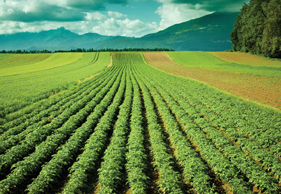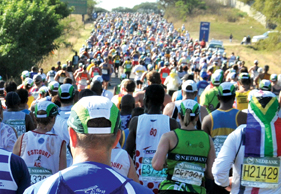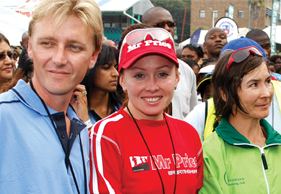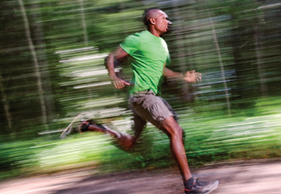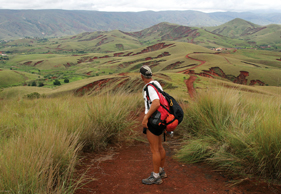These days, more and more people are choosing healthy lifestyles, and are becoming increasingly conscious of environmental issues. And with this, the demand for ‘organic’ foods is growing significantly each year. But do we really understand what organic means and does it really offer benefits over conventional farmed foods? – BY CHRISTINE PETERS
BACK TO BASICS
Organic farming is narrowly defined as farming without the use of synthetic pesticides and fertilizers, or genetically modified organisms, antibiotics, and growth hormones. Organic farms strive to achieve sustainable farming by enhancing soil fertility and biological diversity, providing attentive care to livestock, and using renewable resources. Organic farmers also rely on crop rotation, cover crops and balanced host/predator relationships.
For a food to be called ‘organic’, it must comply with the standards specific to organic agriculture, from production and packaging to transport and distribution. The South African Department of Agriculture is in the process of compiling legislation to govern organic foods. Therefore, most organic produce is grown in line with international regulations governed by the International Federation of Organic Agricultural Movements (IFOAM) and all farmers have to be certified by international bodies such as Ecocert or the British Soil Association. These authorities inspect farmers on a regular basis to ensure that they conform to the strict international regulations governing organic farming. Every organic product carries an official certification number on the back of its packaging, which means that you can have complete confidence that the product is indeed organic.
IS ORGANIC THE BETTER OPTION?
Consumers are faced with the dilemma of purchasing expensive organic food, which is believed to be healthier than its non-organic counterparts, but not really knowing if the costs outweigh the benefits.
From a health perspective, I advise people to keep the following things in mind when purchasing organic foods:
Food safety
Food production is subject to contamination, which carries a risk of food borne illnesses. Using animal manure in organic farming may result in a higher incidence of bacterial contamination. However, any increase in the food safety risk for organic produce would be due to the use of improperly composted matter.
Some conventional farming methods where livestock is jammed into small areas, provide a much higher risk of bacterial contamination. Also, insect infestations can lead to crop damage and there is the risk of moulds and mould toxins spoiling organic produce.
However, a review of the literature indicates that in cereal grains, mycotoxins are at similar levels within both organic and conventional production methods. A trend toward higher levels of salmonella contamination in retail chicken has been observed when antibiotics are not routinely used on the farm, but no differences have been found in produce such as spring mix salad greens grown conventionally or organically.
A well-managed organic farm should not produce foods that carry any more risks than a well-managed conventional farm. Thorough cooking and washing prior to eating organic or conventional food is essential, as is the management of composting and manure application.
Nutrient content
Systematic reviews recently completed in the UK and France show few differences in nutrient content between organic and conventional produce. The UK review reported organic crops had higher levels of phosphorus and higher acidity, and the French review reported organic crops had higher contents of iron, magnesium and polyphenols for some products. Both reported conventional crops were higher in nitrogen.
The small differences reported, especially for minerals, were not across all products and are the results of variations in mineral uptake from soils and fertilizers applied to soils. It is very difficult to make comparisons in nutrient content because the differences are small and there are many variables, including plant cultivar, growing conditions, growing season, mineral content of soils, fertilizer sources and minerals in water, among others. A study of milk quality among conventional and organic varieties showed no biologically significant differences in quality, nutrients and hormones, although conventional milk had statistically lower bacterial counts.
The small differences reported are not likely to affect overall nutrient intake by individuals and are in the range of expected variability for produce and dairy products. More research is required to address systematically whether significant differences exist in nutrient content of organic and conventional produce, grain, meat and dairy products.
Health benefits
Scientific evidence indicates that the health risks associated with disease-causing pathogens are far greater than the negligible health risks associated with ingesting traces of pesticides. Minimising residues should be the focus of good agricultural practice, whatever the method of cultivation used. Consumers should not be fooled into believing that if it says organic, it is necessarily healthy.
Remember, we do know that positive changes to our diets bring about real health benefits. It is the overall nutritional balance of our diets that is more important than the differences of nutrient content of individual foods. The term ‘organic’ describes the method of cultivation, rather than specific characteristics of the food.
Currently, the flavour, nutritional content and health aspects of organic foods are not superior to conventionally grown foods, but more comprehensive studies need to be done.
Environmental benefits
So there may not be much conclusive evidence that organic food is any better for us in terms of direct nutrients but if you consider the effect it has on environmental factors and livestock as a whole, I think we can all agree that indirectly, organic farming methods can be ‘healthy’ and sustainable for our entire planet!
When it comes to cost, organic foods are generally more expensive than conventional foods, due in part to their smaller production scale and higher labour costs. However, organic produce purchased in-season is usually comparable in price to conventional produce.
BOTTOM LINE
Purchasing organic food is a personal choice, which may depend upon its availability, price, sensory qualities and personal values, such as a preference for this food production method. There is limited evidence to suggest some organic foods may be higher in certain nutrients, but the evidence is not consistent enough to make conclusive statements.
Organic food differs only in the way it is grown and processed but this can have major beneficial environmental impacts. Most people agree that we should be including at least five servings of fruit and vegetables, and sufficient grains in our daily diets, whether from an organic or inorganic source.
If you ask me, if you care about our environment and you can afford it, go organic! Just make sure it’s from a reputable source and that you wash foods well before consumption.
THE DIRTY DOZEN AND CLEAN 15
There are two lists, the Dirty Dozen and Clean 15 that can help guide consumers when selecting fruits and vegetables.
The Dirty Dozen list include fruits and vegetables with the highest chemical residues such as peaches, apples, sweet bell peppers, celery, nectarines, strawberries, cherries, kale, lettuce, grapes, carrots and pears.
The Clean 15 list includes produce with some of the lowest chemical exposures such as onions, avocados, sweet corn, pineapple, mangos, asparagus, sweet peas, kiwi, cabbage, eggplant, papaya, watermelon, broccoli, tomatoes and sweet potatoes.
Organic milk, beef and poultry contain no hormones or antibiotics, but often cost 100% more than conventional products.
When talking about heart disease the bottom line is to choose fat-free, lean animal products in order to limit total and saturated fat. More important than eating organic is first, making the switch to fat free dairy and lean meats and second, making sure the meat portion size is appropriate.
Most often organic beef is also grass-fed. It is true that pasture-raised, grass-fed beef contains less total fat than meat from grain-fed animals. In addition, meat and milk from pasture-raised, grass-fed animals contains greater levels of heart-beneficial fatty acids such as Omega 3, alpha-linolenic acid and conjugated linoleic acid.
As for processed foods, choosing those made with wholegrains, the least amount of added sugars, and the lowest in saturated fat and trans-fat free, trumps organic. It’s wiser to spend limited food money on the organic versions of the Dirty Dozen, than it is on organic processed foods.
Consumers facing the daunting challenges of living with a chronic disease should not be worried about the organic factor, especially given all there may be to learn about management of their medical condition. A practical solution that can fall into most food budgets is to focus on foods that come with the heaviest burden of pesticides, additives and hormones. Buy organic for the Dirty Dozen, conventionally grown for the Clean 15, and if the budget allows, feel good about eating grass-fed beef once in a while, but watch the portion size!
ORGANIC VS FREE RANGE
Free range is a term given to animals that are free to roam. The animals may be treated with veterinary medicines and the food provided may contain additives. Organic farmers use 100% plant food and sick animals are treated with homeopathic remedies only. If animals on an organic farm receive veterinary medicines or if the plants are found to contain traces of chemicals or genetically modified material, the products lose their organic status.
HEALTH TIPS
It is still very important to keep in mind prudent dietary guidelines when considering going organic:
If the motivation for going organic is to limit exposure to pesticides, herbicides, antibiotics and hormones then there are some foods that you may want to switch to organic.
If it is to help prevent or manage a chronic disease such as heart disease, then your money may be better spent on improving the overall quality of the diet by eating more fruits and vegetables, fish, nuts, seeds and legumes.







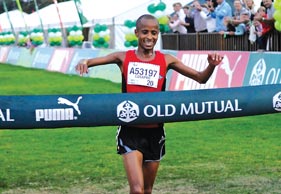
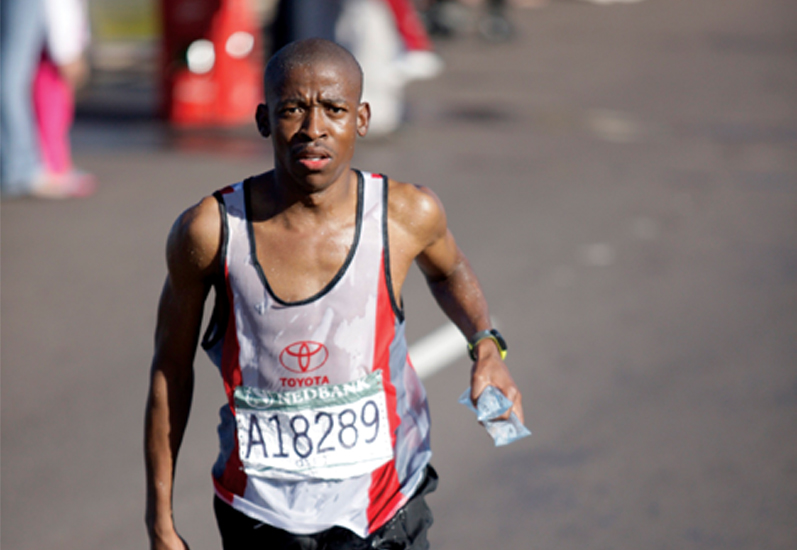
 Fanie Matshipa
Fanie Matshipa Lindsay van Aswegen
Lindsay van Aswegen Gift Kelehe
Gift Kelehe Frans Chauke
Frans Chauke Andrew Kelehe
Andrew Kelehe White Modisenyane
White Modisenyane Joseph Maerman struggled with injuries during the team’s training camp but still managed to produce a silver medal. Joseph, who does not specialise in Comrades, improved his previous Comrades time and finished 92nd male in 6:34:19.
Joseph Maerman struggled with injuries during the team’s training camp but still managed to produce a silver medal. Joseph, who does not specialise in Comrades, improved his previous Comrades time and finished 92nd male in 6:34:19. Lucas Raseruthe
Lucas Raseruthe